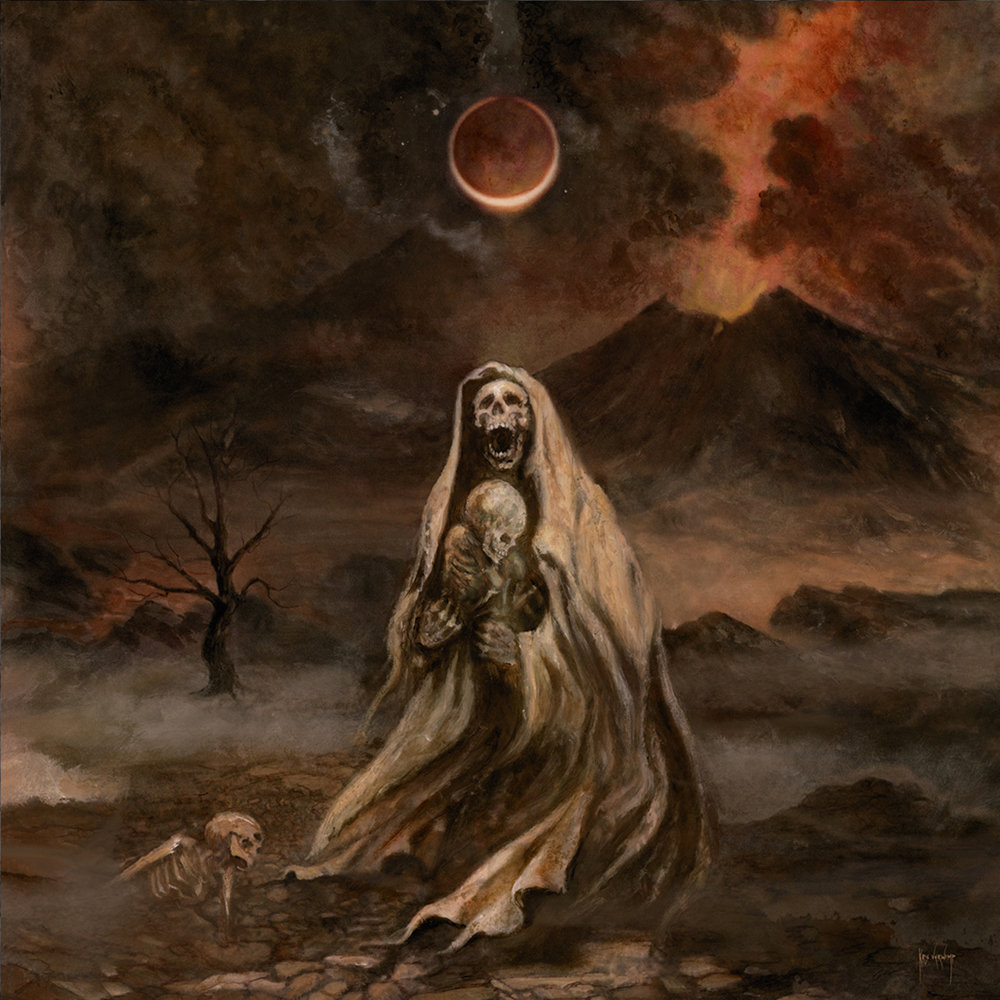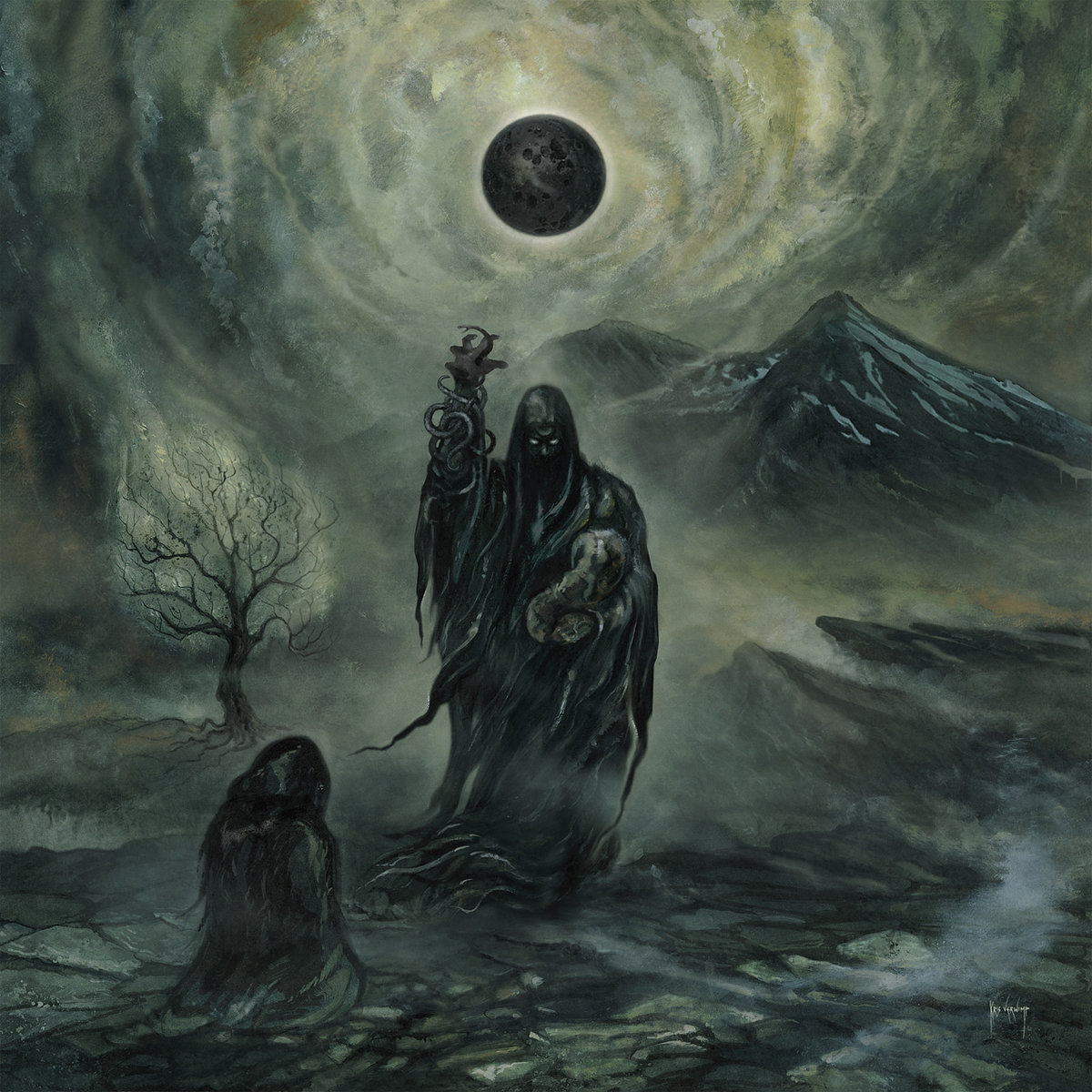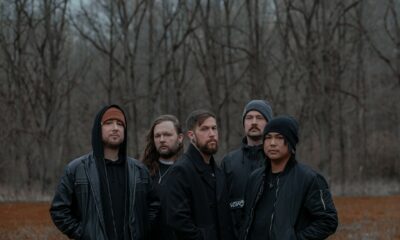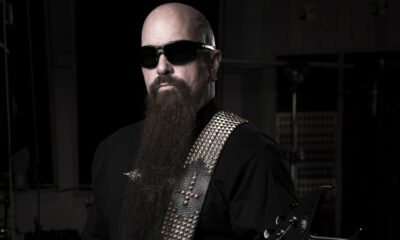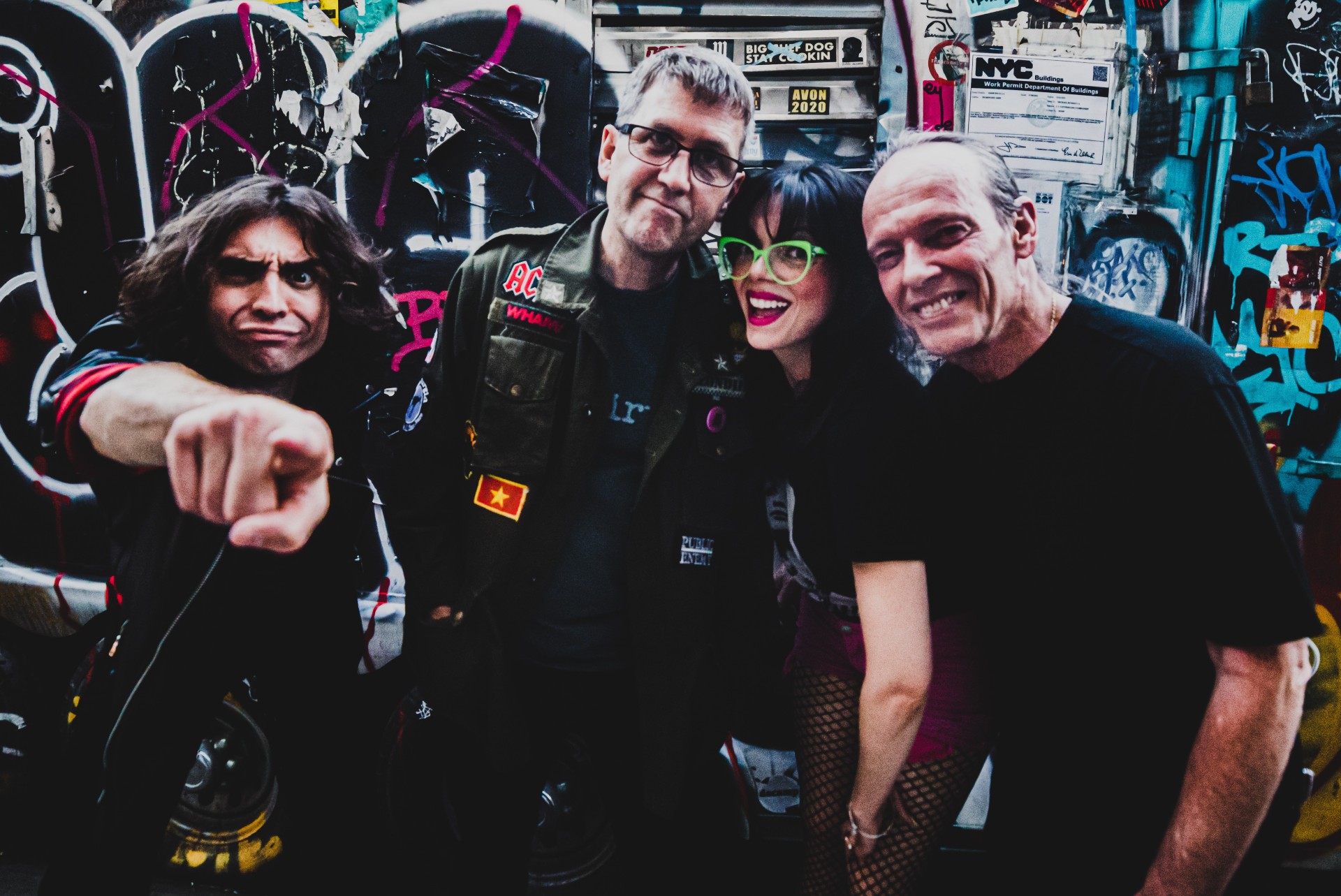Interviews
Uada Read this Interview with Singer and Guitarist Jake Superchi on the New Album ‘Djinn’

In the wake of their most blistering, ambitious release yet, Djinn (read our review), released September 25th via Eisenwald Records, Portland’s Uada are riding the crest of a self-generated wave. Frontman Jake Superchi was kind enough to answer thirteen questions (for V13!) about the record, the band and the world in general.
Djinn has deservedly received a ton of really good press but how do you feel, in general, about black metal, being an essentially underground movement, receiving spotlight attention?
Jake Superchi: “I don’t really think about it honestly, but I would say that black metal stepped out from being underground back in the early to mid ‘90s. Hearing all those old stories about what was going on in Norway at the times seemed like it was really a push to receive some spotlight attention if I’m being honest. Although I can’t really say as I was not there and never had any contact with any of the individuals personally, I can only speculate. So either they were looking for attention by the antics they acted through outside of the music itself or maybe they thought they would make a difference by burning down some church buildings that would be restored by their own tax money, I’m not sure. Although I have heard it was a stand against Christianity invading Norway, it doesn’t seem like their country has really embraced that religion nor does it seem to be a leading establishment, especially not like here in the United States.
So, really, I think the spotlight was already shined on this genre many years ago and once under that light, there really is no turning back. Personally, I don’t care either way, I’m just here to make music and cast what I need to through it. It will go where it will go and it is beyond any of our control. If any band truly wanted to stay underground they wouldn’t tour, release music or have any social media outlets. Maybe we should all be asking what is underground today? Especially when you can find everything on YouTube.”
Personally, I feel that Djinn occupies a liminal space, somewhere between black metal and melodeath. In light of this, I thought that the ‘standard’ record label genre classifications became difficult. How would you categorize your music, personally?
“I’ve never been a fan of melodeath honestly. It’s a genre that never caught my attention really, aside from a few early albums like Slaughter the Soul (At The Gates, 1995), Tales from a Thousand Lakes (Amorphis, 1994) and Heartwork (Carcass, 1993). I’ve heard people describe our music or tie it to that genre a few times, so it’s interesting but I think that is just a credit to the broad scope of genres that we allow to influence our music. My elitist years are behind me though, so I really don’t care about labels or trying to fit into a certain genre. For us it was all about if Dissection decided they wanted to play Judas Priest. Although I will say there are times where I purposely go against the black metal grain (what else can you do at this point), that I do consider our craft to be tied to that genre.
It is our roots and the music that has impacted me most in this life. The themes and the real life situations that surround the writing to me fits most with the occult and mysticism sides of black metal. Those values and beliefs are beyond genre though I suppose, although I’m not sure of many other genres that purposely tie their art to such extremes, unless we want to classify our music as occult rock, which did in fact influence this album a bit. The reality is, we don’t really care about being put in a box, we just create what we want to create.”
Coming from Portland, Wolves in the Throne Room comparisons are almost a given. How would you respond to these, as a compliment or a gross oversight?
“Although we did originate in Portland, I’ve always lived in Washington state about an hour or so south from where Wolves in the Throne Room resides. I’m sure there are some similarities being that we live in the same area, surrounded by the same wilderness and taking influence from the same Cascadian landscapes. Almost all regional areas seem to have a sound and I think the Pacific Northwest is no different. Although we are highly distinguishable soundwise, we all come from the same roots.”
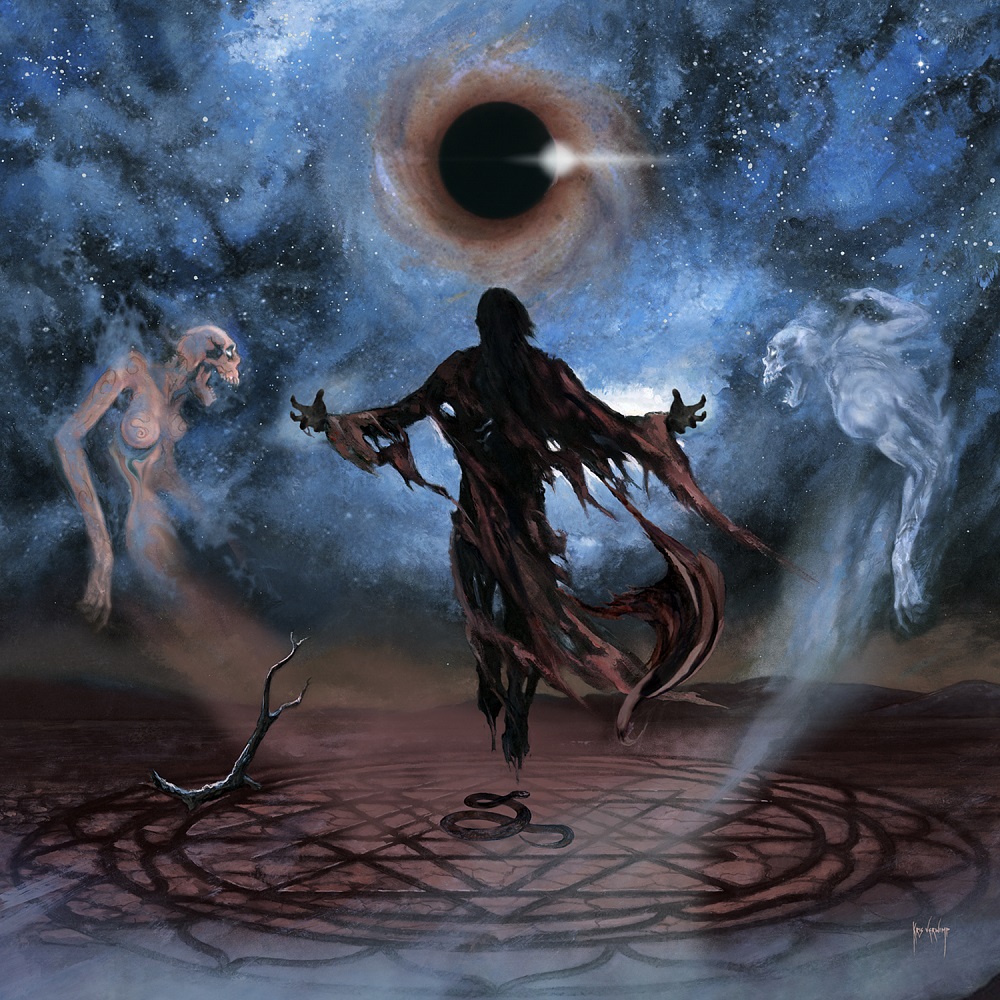
Artwork for ‘Djinn’ by Uada
The other comparison that is inescapable is with other ‘covered face’ black metal bands, like Mgła. Again, do you appreciate this comparison or do you feel it shows a marked lack of understanding on behalf of these writers?
“I would say both. Again, we all come from the same roots and playing a melodic style of black metal is bound to have some similarities. Although I think this has been beaten like a dead horse and a little overexaggerated, it is what it is. We know where our roots have come from and we know that if people were to listen to some of our other older projects they’d see a clearer path of where Uada came from. We also know there are a group of people that want to see our downfall for whatever personal vendetta they hold against us and they’ll use whatever tactic they can. When we started there were some people around here that were working for a label who wanted to sign us, but we were not interested in working with them. We watched them start the rumour mill and spread the ‘ripoff’ accusations all over the place.
So, it is no surprise to see this, even though we feel what we are doing musically is quite different in feeling and attitude. It was a bit amusing to watch our debut come out and be called a rip off of Exercises in Futility (Mgła, 2015) when there is online footage of us playing these songs live nine months before that album had come out, but we also got the same thing with Cult of a Dying Sun and Behemoth’s ‘Come to Me Bartzabel,’ even though our album was released first. So, it’s apparent not everyone is paying very close attention. If you really look at any melodic form of music you’ll hear similar sounding melodies, patterns and scales. There’s only twelve unique notes after all.
As far as the aesthetic goes, hoods and robes have been used in this genre as well as other forms of music and ritual for a very long time. Two of my past projects before this one also wore similar clothing involving hoods and leather, so it’s really not something new. If anything is new, it’s probably a generation of listeners that have just come into the light of black metal who are not as familiar with the past. At the end of the day though, it really doesn’t matter.”
On the subject of comparisons, are there any bands Uada does list as influences?
“We’ve stated from the beginning that the majority of our influences were from the ‘90s second wave in Sweden. Dissection, Dawn, Vinterland, and Unanimated mostly. We wanted to take that sound and incorporate a more rock n’ roll feel from influences like Judas Priest, Black Sabbath, Iron Maiden, and Thin Lizzy, which is exactly what I think our music sounds like.”
One standout aspect of Uada that has been unmistakable throughout the band’s short history is its tone. Can you give a brief breakdown of the gear setup that goes into creating the Uada sound?
“Well, our tone is ever evolving but James (Sloan) and I are both using Peavey 6505+ for amps. He runs his through a Marshall stack and I run mine through a Genz Benz stack. I think one thing that really separates our tone from others is the fact that we focus on a warm tone as opposed to a razor cold sound that you’ll hear in most black metal. That’s the rock n’ roll influence of course. Someone from a band we toured with one time told me that we have this Van Halen type of sound going on, and it makes sense since the amps we are using is an evolution from Eddie’s (Van Halen) 5150. James and I also both grew up listening to ‘80s metal far before we found black metal, so those are our deepest roots and ties to metal in general. Just because we later discovered something that meant a bit more to us, doesn’t mean we have to turn our backs on those who led us there.”
Live, Uada is less a performance than a spectacle. In the current move towards an ‘experience economy,’ how much preparation goes into an Uada show?
“There are a lot of parts to the show and things that need to be in place to make it what it needs to be. Having a production leads to many factors having to be in the right place and unfortunately we haven’t been fortunate enough to have a proper road crew to take care of these things for us. So all this weight lays upon me to make sure each and every aspect is correct. It doesn’t always go the way it should and when everything is not in place, my head is not where it should be either, meaning that my focus is on what is going wrong. This completely kills my personal experience and knowing that I’m not able to completely deliver to the experience that those standing before us are there to see, it becomes quite frustrating.
For some it’s easy to just go up on stage and play an instrument, I get that. For me, this is as close to religion as I get and there is a spiritual experience I’m always trying to achieve and things I’m trying to manifest through what most would call a ritual dance. So, these factors for me are extremely important.”
You have also made public announcements regarding your live show and the physical toll this extracts; while I can personally attest to the otherworldly, transportative nature of these shows, can you expand on the ‘spiritual experience’ aspect of your shows that call for this uncompromising extremity?
“Well, first and foremost, my goal is to completely drain myself of energy at each show. What I have in me, I want out. When I walk off the stage I want to know that I gave everything that I possibly could to that moment, that crowd and that performance. It’s absolutely draining, especially when doing it night after night, but if I’m not giving it my all I’d rather give nothing at all.
As far as the spiritual side to it, there are a few different things involved. For one, I’m not just playing to those in the room but any and all that are attached to the energy I’m putting forth. Who or whatever is listening, it is also for them. Secondly, and selfishly, I’m constantly after an out of body experience. There have been many times on stage where I am able to completely let go of myself. When this happens I can experience the show like the rest of the crowd although I’m usually hovering above looking down upon myself. In a way it’s almost like astral projection or remote viewing. There is no greater feeling though than being outside of one’s self watching from a point of complete freedom, until being transported back into the body. Coming back into the self and realizing the set is almost over is something truly special. I long for that experience at every show.
Third, is the manifestation behind it all. The energy that I push out goes somewhere and later returns. There is energy behind every movement, thought and word. When we are aware of this, we can use it in ways to change our reality and existence. Our show is doing that to those witnessing it, and we are doing it through the energy that is being amplified through our instruments. It is all an implementation of will as well as a channeling.”
- Artwork for ‘Devoid of Light’ by UADA
- Artwork for ‘Cult of a Dying Sun’ by UADA
So many other bands have opted to cope with the COVID-19 situation by increasing their social media footprint and promoting themselves through live streamed performances. Is there any reason Uada has not followed this route?
“It is impossible for us at this moment right now. Our lead guitarist (James Sloan) resides in Colombia with his wife when we are not touring and has been there since February. With the international travel ban still in effect there, he is unable to travel to the U.S. at this time making it impossible for us to set up a live stream scenario. Although we have to put certain plans on hold and to the side for now, it is the best thing that he is there with his wife during the pandemic. We will continue to work on new material via file sharing and possible future video chat sessions. When the time is right we will resume where we left off, maybe even with a brand new album by the time this all boils over. Either way, we adapt and continue forward.”
The visual side of Uada also needs addressing: can you describe the experience of working with your cover artist, Kris Verwimp? How did you brief him? Was it a collaborative process?
“Kris and I have been working together for 16 years now. He has done various album covers for one of my other projects and a few logos as well. I discovered Kris in the ‘90s through some infamous covers that he created for bands like Absu, Marduk, Enthroned, Moonblood and more. His work always spoke to me. It had a way of transporting me to another world and was highly influential. So, when it was time to find an artist to create art for my own albums there was no question that Kris would be the one to call upon. Ultimately I want our art to inspire others in the way that I first was long ago.
When I’m writing an album, I have it all in my head: the structures, the beats, the titles, concepts, and so on. This is the same for the art as well. Since each album is telling a story the artwork has to match this. So, I always reach out to Kris with an idea and give him a structure to work around. He of course always exceeds our expectations and it was no different with Djinn.”
The ‘triptych’ of the cover paintings form their own narrative, too. How would you relate these images to the themes of the three records?
“The initial thought was to have these three album covers tell a story of their own while being linked to an overall, like chapters in a book. As the albums move forward we see the covers move in reverse. I’m not sure if it is something that a band has done before honestly, at least to my knowledge, although I’m sure something similar has been accomplished at some point, but it was something that just made sense for us. Although we’ve heard from critics that we’re ‘being lazy’ about the artwork, we view it as the opposite and regardless of anyone’s opinion, we will continue to do what it is that we wish to do.”
Peter Beste provided the band photographs for Devoid of All Light. It’s quite a feather in the cap for any young band to work with such a well-known and respected figure in black metal, how did the relationship come to be?
“Peter had just moved to the Portland area and caught one of our shows I think. One of our members at the time had reached out to him and since he had liked what we were doing he agreed to do a shoot. It just came together like it was meant to be I suppose. We really enjoy working with Peter and although we chose another route to capture a specific scenario with Djinn, we hope we’ll work with Peter again in the future.”
Lastly, on the subject of long-established figures in black metal, is there anybody in the scene, musician, artist, journalist or otherwise, that Uada would like to work with in the future?
“We all of course have our heroes and it’s hard to really pinpoint it down, but I think we would all equally be ecstatic to work with King Diamond. We all view Mercyful Fate as one of the founders of the first wave and with our fusion of black and heavy metal it feels like it would be a perfect match made in hell.”
-

 Music3 days ago
Music3 days agoTake That (w/ Olly Murs) Kick Off Four-Night Leeds Stint with Hit-Laden Spectacular [Photos]
-

 Alternative/Rock4 days ago
Alternative/Rock4 days agoThe V13 Fix #010 w/ High on Fire, NOFX, My Dying Bride and more
-

 Hardcore/Punk2 weeks ago
Hardcore/Punk2 weeks agoHastings Beat Punks Kid Kapichi Vent Their Frustrations at Leeds Beckett University [Photos]
-
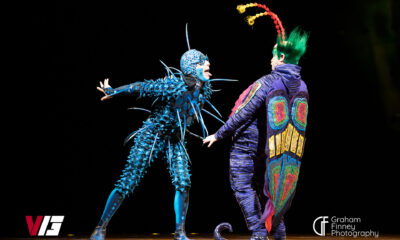
 Culture2 weeks ago
Culture2 weeks agoCirque Du Soleil OVO Takes Leeds Fans on a Unique, Unforgettable Journey [Photos]
-

 Alternative/Rock1 week ago
Alternative/Rock1 week agoA Rejuvenated Dream State are ‘Still Dreaming’ as They Bounce Into Manchester YES [Photos]
-

 Features3 days ago
Features3 days agoTour Diary: Gen & The Degenerates Party Their Way Across America
-

 Culture6 days ago
Culture6 days agoDan Carter & George Miller Chat Foodinati Live, Heavy Metal Charities and Pre-Gig Meals
-

 Music5 days ago
Music5 days agoReclusive Producer Stumbleine Premieres Beat-Driven New Single “Cinderhaze”

